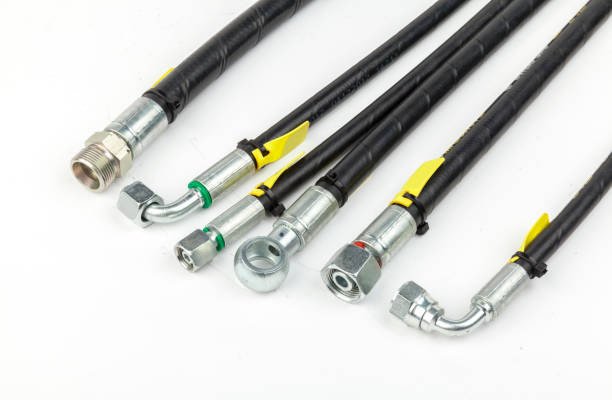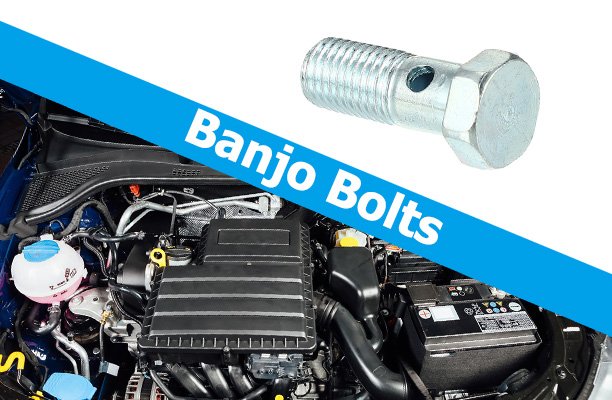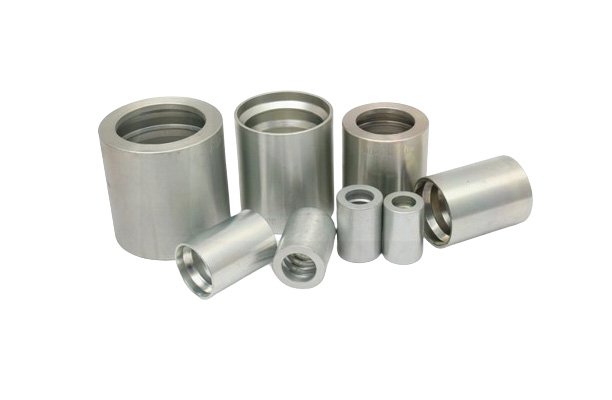When you’re dealing with hydraulic systems, the right hose choice can make all the difference. Choosing incorrectly can lead to costly repairs, downtime, or even accidents. So, it’s important to understand every factor that goes into selecting the ideal hydraulic hose. This guide will walk you through each step to help ensure you’re making the right choice for your system.
Understand Your System’s Pressure Requirements
The pressure your hydraulic system will handle is the starting point for selecting the right hose. If the hose isn’t rated to handle the system’s pressure, it could burst under stress or cause system failure.
Key Considerations:
- Working Pressure: The working pressure is the pressure at which the system operates under normal conditions. The hose should be rated for at least this level of pressure. In fact, you typically want the hose to have a working pressure that’s about 25% higher than your system’s operational pressure for added safety.
- Burst Pressure: Burst pressure is the pressure at which the hose will rupture. As a general rule, the burst pressure should be at least 3-4 times higher than the system’s maximum working pressure. This margin ensures that the hose can withstand unexpected pressure spikes without failure. Always check the manufacturer’s specifications for this crucial figure.
- Pressure Spikes: Hydraulic systems can experience sudden spikes in pressure that exceed normal operating levels. This can be caused by factors like valve malfunction, rapid changes in direction, or system surges. Be sure to choose a hose that can withstand these spikes. For high-pressure hydraulic systems, consider hoses with multiple layers of reinforcement, such as braided wire or spiral-wound steel.
Choosing a hose that can safely handle the system’s operating and potential pressure spikes is essential to avoid hose failures that could lead to system downtime, leakage, or more dangerous outcomes.
Material Compatibility
The material of the hydraulic hose determines its ability to resist wear and tear, and its compatibility with the fluids running through the system. You need a hose material that won’t degrade when exposed to hydraulic fluids, oils, and other chemicals used in your system.
Common Hose Materials:
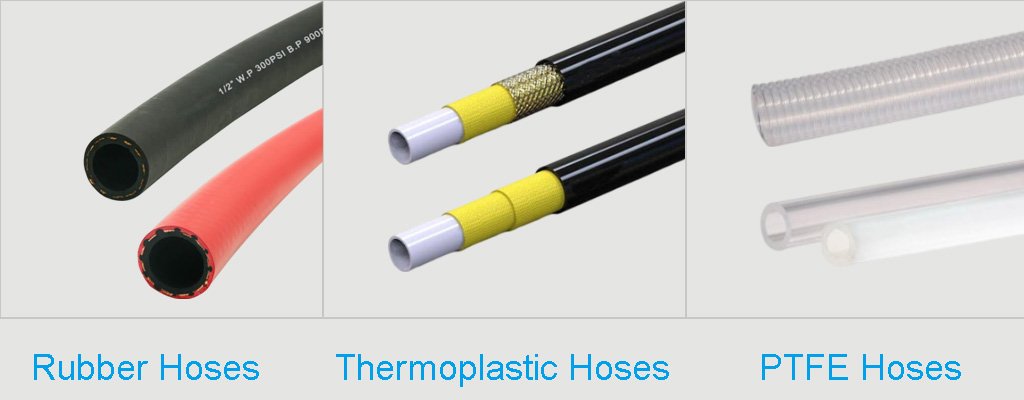
- Rubber Hoses: Rubber hoses are among the most commonly used in general hydraulic applications. They are flexible, affordable, and work well with many hydraulic fluids, including mineral oils, water-based fluids, and synthetic oils. However, they can degrade with prolonged exposure to high temperatures, ozone, or UV radiation.
- Best For: Low to medium-pressure applications and environments with minimal exposure to harsh chemicals or extreme temperatures.
- Thermoplastic Hoses: These hoses are made from synthetic materials like nylon or polyurethane, providing superior resistance to heat, chemicals, and abrasion. Thermoplastic hoses are ideal for environments with a lot of exposure to aggressive fluids or where flexibility is a must. They are typically lighter than rubber hoses and are resistant to abrasion and crush damage.
- Best For: Applications involving chemical transfer, petroleum-based fluids, or systems that require lightweight and flexible hoses.
- Stainless Steel Braided Hoses: These hoses feature an inner tube made of elastomeric material (like rubber or PTFE) and are reinforced with a stainless steel braid. The braid provides exceptional protection against wear, punctures, and pressure spikes. They’re also resistant to high temperatures and corrosive chemicals, making them perfect for high-performance systems.
- Best For: High-pressure systems and applications that demand high strength and resistance to wear and corrosive substances.
- PTFE (Polytetrafluoroethylene) Hoses: PTFE hoses offer excellent chemical resistance and can withstand extremely high temperatures. They’re non-reactive and ideal for transporting harsh chemicals or fluids that would degrade other hose materials. However, they can be stiffer and less flexible compared to rubber or thermoplastic hoses.
- Best For: Chemical processing, food-grade systems, and high-temperature applications.
Tip: Always check the compatibility of your hose material with the hydraulic fluid used in your system. For instance, using a hose designed for water-based fluids with an oil-based system may lead to early degradation.
Temperature Range
Hydraulic systems often operate in environments where temperatures can vary drastically. Whether the system operates in freezing cold or in extreme heat, the hydraulic hose must remain functional and flexible.
Temperature Considerations:
- High-Temperature Applications: If your system operates in environments that experience high heat—like industrial factories, construction sites, or oil and gas fields—you’ll need a hose that can withstand elevated temperatures. For high-temperature applications, hoses with rubber or thermoplastic outer coverings are preferred because they can handle temperatures from -40°F to 250°F (-40°C to 120°C), and some even go higher.
- Example: In heavy-duty industrial machinery or hot environments, you’ll likely need hoses made with heat-resistant rubber or synthetic elastomers that offer protection from both heat and pressure.
- Low-Temperature Applications: In freezing conditions, hoses can become brittle and lose their flexibility, which could result in cracking or leaks. Low-temperature-rated hoses remain flexible and functional in temperatures as low as -70°F (-57°C). The materials you choose—such as specially formulated rubber compounds or thermoplastic—should maintain their integrity even in sub-zero conditions.
- Example: Equipment used in cold storage facilities, snowplows, or other winter-based applications may require a hose rated for extreme cold.
Tip: Be sure to choose hoses with a wide temperature tolerance if your system operates in environments with significant temperature fluctuations. You don’t want to risk the hose freezing or softening in extreme temperatures.
Size Matters: Choose the Right Diameter
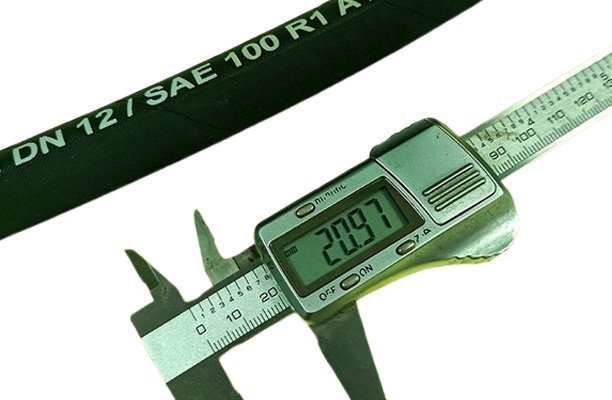
When it comes to hydraulic hoses, size is one of the most important factors. If you choose the wrong hose diameter, it can result in issues like flow restrictions, high pressure, and overall system inefficiency.
Sizing Considerations:
- Inner Diameter (ID): The inner diameter of the hose determines how much fluid can flow through the system. If the hose ID is too small, the system won’t get the necessary flow of fluid, leading to performance issues. On the other hand, a hose with too large of an ID could cause the hydraulic system to lose power. Ensure the ID matches the required flow rate for the system.
- Example: A hose for a large industrial machine might need an ID of 2 inches or more to handle high fluid volumes, while a smaller machine might only need ½ inch.
- Outer Diameter (OD): While the ID is the most critical factor for performance, the OD affects the hose’s strength and flexibility. The outer diameter will also determine how much space is available in the system for routing and installation. If the OD is too large, the hose may be difficult to install in tight spaces or cause unnecessary friction.
- Tip: Double-check the available space in your system before deciding on the OD. Installing a hose that’s too big could cause routing problems.
Consider Flexibility and Bend Radius
Hoses in hydraulic systems often need to bend and twist to fit into specific spaces. Choosing a hose with proper flexibility and bend radius is essential for both performance and durability.
Key Flexibility Considerations:
- Bend Radius: Each hose comes with a specified minimum bend radius. If you bend the hose beyond this radius, you risk restricting fluid flow or damaging the hose. This is especially important in applications where the hose will be routed through tight spaces or undergo constant movement.
- Example: A hose used in mobile equipment like construction machinery will need to bend frequently without causing any restrictions, so a larger bend radius is ideal.
- Flexibility: Some hoses are more flexible than others, which is crucial for systems where the hose must move or flex. Thermoplastic hoses, for example, are typically more flexible than rubber hoses, making them ideal for applications where the hose is routed through tight spaces or subject to frequent movement.
Tip: Always measure the available space for routing and ensure the hose you select can bend without compromising the integrity of the material or causing fluid restrictions.
Durability and Abrasion Resistance
In high-wear environments—such as construction, mining, or manufacturing—your hydraulic hoses will be exposed to a variety of potential hazards that can lead to abrasion. Ensuring your hose can withstand these conditions is essential for preventing premature wear and failure.
Durability Features:
- Reinforcement Layers: Many hydraulic hoses are reinforced with multiple layers of materials like steel braids or spiral steel wires. These layers increase the hose’s burst pressure and improve resistance to crushing, punctures, and abrasions. For heavy-duty applications, look for hoses with multiple layers of reinforcement to ensure maximum protection.
- Example: A mining operation might require hoses reinforced with steel braids to protect them from the harsh terrain and physical impacts.
- Protective Covers: Many hoses also feature protective covers made of abrasion-resistant materials like thermoplastic, rubber, or metal. These covers shield the hose from direct exposure to external elements that can cause wear, such as sharp objects, high pressures, or UV rays.
Tip: Consider the type of environment your hydraulic hose will be exposed to. If you’re working in an area with lots of moving parts, debris, or other hazards, prioritize hoses with strong protective covers or reinforcement layers.
Assembly and Fittings
Once you’ve selected the right hose, the next step is ensuring it’s properly assembled. This means using the right fittings and ensuring the hose is securely connected to the system. Poorly assembled hoses are prone to leaks and premature failure.
Fitting Considerations:
- Fitting Types: Different systems use different types of fittings, such as flanged, threaded, or quick-connect. Make sure the hose you choose is compatible with the type of fittings required for your hydraulic system.
- Material Compatibility: Just like with hoses, the fittings should be compatible with the materials used in your system. For instance, a stainless steel hose should ideally be paired with stainless steel fittings to prevent corrosion. If you’re using a highly corrosive fluid, be sure the fittings can withstand those conditions as well.
Conclusion
Selecting the right hydraulic hose is more than just a quick decision—it’s an investment in your system’s longevity, efficiency, and safety. From pressure ratings to material compatibility and temperature tolerance, every aspect of the hose must align with the needs of your hydraulic system. By following the tips and guidelines in this detailed guide, you’ll be well-equipped to make the best choice for your unique system.
FAQs
1. What is the most important factor when choosing a hydraulic hose?
The most important factor is ensuring the hose’s pressure rating matches or exceeds your system’s working pressure.
2. Can I use a single hose for all hydraulic systems?
No, each hydraulic system has different requirements, such as pressure, temperature, and fluid type, so hoses need to be chosen accordingly.
3. How do I determine the right hose size for my system?
The right size is based on the system’s flow rate and pressure requirements. Choose a hose with the appropriate inner diameter (ID) and outer diameter (OD) for your setup.
4. Can temperature affect hydraulic hoses?
Yes, extreme temperatures—both high and low—can cause hoses to degrade. Always select a hose that matches the temperature range of your system.
5. What’s the difference between thermoplastic and rubber hoses?
Thermoplastic hoses are more resistant to chemicals, heat, and abrasion, while rubber hoses are generally more flexible and ideal for general applications.
6. How do I prevent hydraulic hose failure?
Regularly check the hose for wear, ensure proper installation with the right fittings, and use hoses with adequate pressure ratings and material compatibility for your system.

